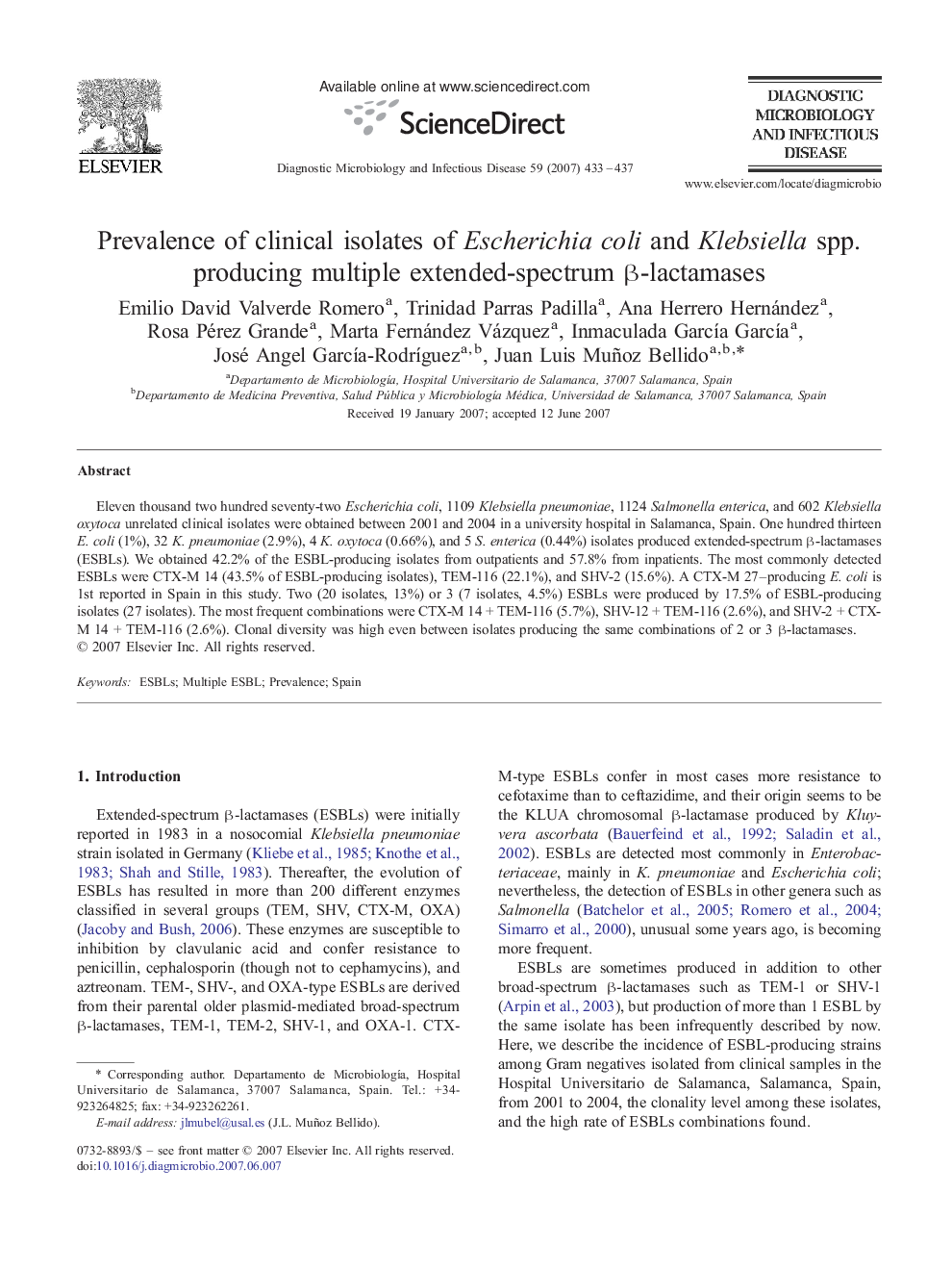| Article ID | Journal | Published Year | Pages | File Type |
|---|---|---|---|---|
| 3348716 | Diagnostic Microbiology and Infectious Disease | 2007 | 5 Pages |
Abstract
Eleven thousand two hundred seventy-two Escherichia coli, 1109 Klebsiella pneumoniae, 1124 Salmonella enterica, and 602 Klebsiella oxytoca unrelated clinical isolates were obtained between 2001 and 2004 in a university hospital in Salamanca, Spain. One hundred thirteen E. coli (1%), 32 K. pneumoniae (2.9%), 4 K. oxytoca (0.66%), and 5 S. enterica (0.44%) isolates produced extended-spectrum β-lactamases (ESBLs). We obtained 42.2% of the ESBL-producing isolates from outpatients and 57.8% from inpatients. The most commonly detected ESBLs were CTX-M 14 (43.5% of ESBL-producing isolates), TEM-116 (22.1%), and SHV-2 (15.6%). A CTX-M 27-producing E. coli is 1st reported in Spain in this study. Two (20 isolates, 13%) or 3 (7 isolates, 4.5%) ESBLs were produced by 17.5% of ESBL-producing isolates (27 isolates). The most frequent combinations were CTX-M 14 + TEM-116 (5.7%), SHV-12 + TEM-116 (2.6%), and SHV-2 + CTX-M 14 + TEM-116 (2.6%). Clonal diversity was high even between isolates producing the same combinations of 2 or 3 β-lactamases.
Keywords
Related Topics
Life Sciences
Immunology and Microbiology
Applied Microbiology and Biotechnology
Authors
Emilio David Valverde Romero, Trinidad Parras Padilla, Ana Herrero Hernández, Rosa Pérez Grande, Marta Fernández Vázquez, Inmaculada GarcÃa GarcÃa, José Angel GarcÃa-RodrÃguez, Juan Luis Muñoz Bellido,
